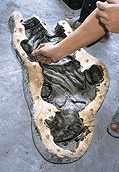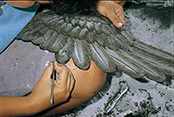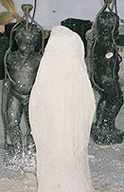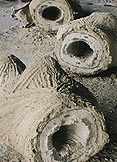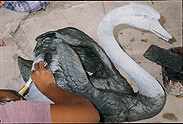| 1.Wax is first painted then poured into the mold, so that
every crevice is filled, allowing for maximum
detail. |
| 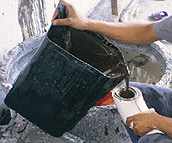
| 2.After the wax
statue is removed from the mold, all the details are perfected by
hand. |
|
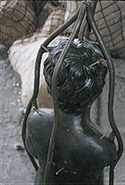 |
3.The wax
impression is surrounded by wax sprues. The sprues allow air to
escape during the brass pouring, preventing air bubbles in the
finished piece. |
| 4.The wax impression then encased inside and out with
refined clay. |
| |
|
The exceptional detail inherent in our
sculptures is created as each piece is cast by the "cire perdue," or "lost
wax" method, dating back to ancient Egypt and refined in Rome and later
Paris.
After a mold is created from an original sculpture, wax is
poured into the mold (1), and after hardening
and removing the mold, all the details are perfected (2).
The wax impression is encased inside and out with refined
clay (3) and (4).
Once the clay sets, the wax impression is fired in a kiln; the wax melts
out of the clay mold, and is "lost" (5). The
void created by the melted wax in the clay mold is then filled with molten
brass, which is identical to the wax impression it replaced (6).
The clay mold surrounding and inside the sculpture is
delicately removed, revealing the cast sculpture, which is subsequently
finished by buffing, polishing and patinizing to give the piece its final
verdigris (green-grey) or bronze lustre (7),
(8), and (9).
This labor intensive method of lost wax casting produces
unique sculptures with exceptionally fine detail of lasting durability,
and which are aesthetically warm and ruggedly handsome. Each piece is cast
and assembled by our artists one at a time, just as the originals were.
Variations in color, finish, size and shape will occur due to the
individual craftsmanship inherent in the process. |
|
| 5.Molds after the wax has been
"lost." |
|
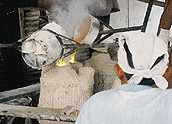 |
6. The clay mold is then filled with molten
brass. |
| 7.Larger pieces sometimes require welding as they are
cast from smaller pieces. |
|
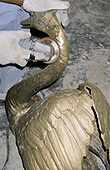 |
8.The pieces are polished and then an oxidation formula
is applied to give them their verdi-gris patina.
|
| 9. Finally a coat of wax is applied to the oxidize piece
to protect the finish. |
| |






 Woodside Gardens
The Registry of Nature Habitats
Woodside Gardens
The Registry of Nature Habitats 
 1999 -
1999 -
